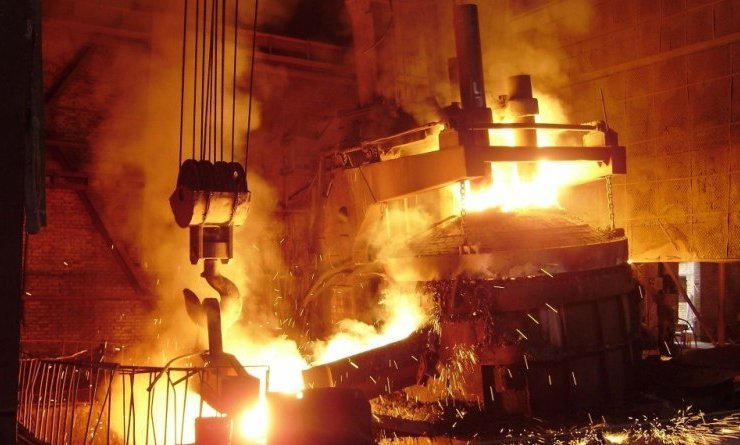According to the latest report from the World Steel Association (WSA) - the international association of steel producers - crude steel production for the 64 member countries grew 5.4% year on year for the reporting month to 162.7 million tonnes.
Production in China, which accounts for about half of global steel production, rose 10% year-on-year to a new all-time high of 89.1 million tonnes in May, exceeding the previous peak of 85 million tonnes recorded in April. Steel mills in the country have boosted production, although higher raw material costs due to the surge in iron ore prices have lowered profit margins. The record highs underscore China's continued demand for steel consumption.
Concerns over supply shortages due to mine disruptions in Brazil prompted a sharp jump in the price of iron ore, the main raw material for metals, earlier this year. Chinese steel mills are looking to raise prices as raw material costs rise.
The steel industry continues to be affected by a constant oversupply of steel in the market, exacerbated by increased production in China. Despite trade tensions between the US and China, Chinese steel mills increased production last year to take advantage of strong profits. The surplus of Chinese steel also put downward pressure on global steel prices. China's overcapacity remains a major blow to the metals sector.
China's steel production grew 6.6% year on year to 928.3 million tonnes last year. The country's share in global steel production increased to 51.3% in 2018 from 50.3% in 2017.
China's steel production increased 10.2% year-on-year to approximately 404.9 million tonnes in the first five months of 2019, according to WSA data.
How are other key manufacturers doing?
Among other major Asian producers, India - the second largest steel producer in the world - increased production by 5.1% to 9.2 million tons in May. The WSA said earlier this year that it expects infrastructure projects to continue to support growth in steel demand in India.
Steel production in Japan fell 4.6% to 8.7 million tons in May, while production in South Korea rose 2.2% to 6.4 million tons. Consolidated production in Asia rose 7.6% to 117.3 million tonnes.
In the United States, steel production rose 5.4% to 7.7 million tonnes. The 25 percent tariff on steel imports that the Trump administration levied last year is boosting production capacity for US steel producers amid declining imports. Tariffs have helped the US steel industry move beyond the important 80% utilization level, the minimum required for the industry to remain profitable. Increased capacity utilization spurs US steel production.
Due to trade actions, a number of US steel producers, including United States Steel Corp. (X - Free Report), Nucor Corp. (NUE - Free Report) and Steel Dynamics, Inc. (STLD - Free Report), are investing in increasing growth rates. build up production capabilities and the ability to modernize production facilities. However, production growth, driven in part by the restart of steel mills, contributed to the drop in US steel prices.
Meanwhile, production in Canada rose 12.8% to 1.2 million tonnes. Total North American production rose 4.5% to about 10.5 million tonnes.
In the European Union, production in Germany, the largest steel producer in the region, fell 6.2% to 3.5 million tonnes. Production in Italy rose 1.1% to 2.2 million tonnes. France saw a 7.6% decline to about 1.2 million tonnes, while Spain's smelting fell 7.1% to 1.3 million tonnes. Total EU steel production fell 2.8% to 14.5 million tonnes.
Middle East steel production rose 1.6% to 3.2 million tons with Iran, the largest producer in the region, rising 3.8% to 2.2 million tons. In the reporting month, Africa increased its production by 8.5% to 1.3 million tons.
Among other large production regions, steel production in Turkey fell by 8% to 3.1 million tons. Production in Brazil, the largest producer in South America, rose 2.9% to 2.8 million tonnes.
Industry Outlook
Tangshan, the largest steel city in China, has cut production in half at its factories by the end of July to improve air quality. This intense production restriction at a steel center in China's upper province of Hebei could hold back China's steel output growth in the coming months.
However, Chinese steel mills, ver





